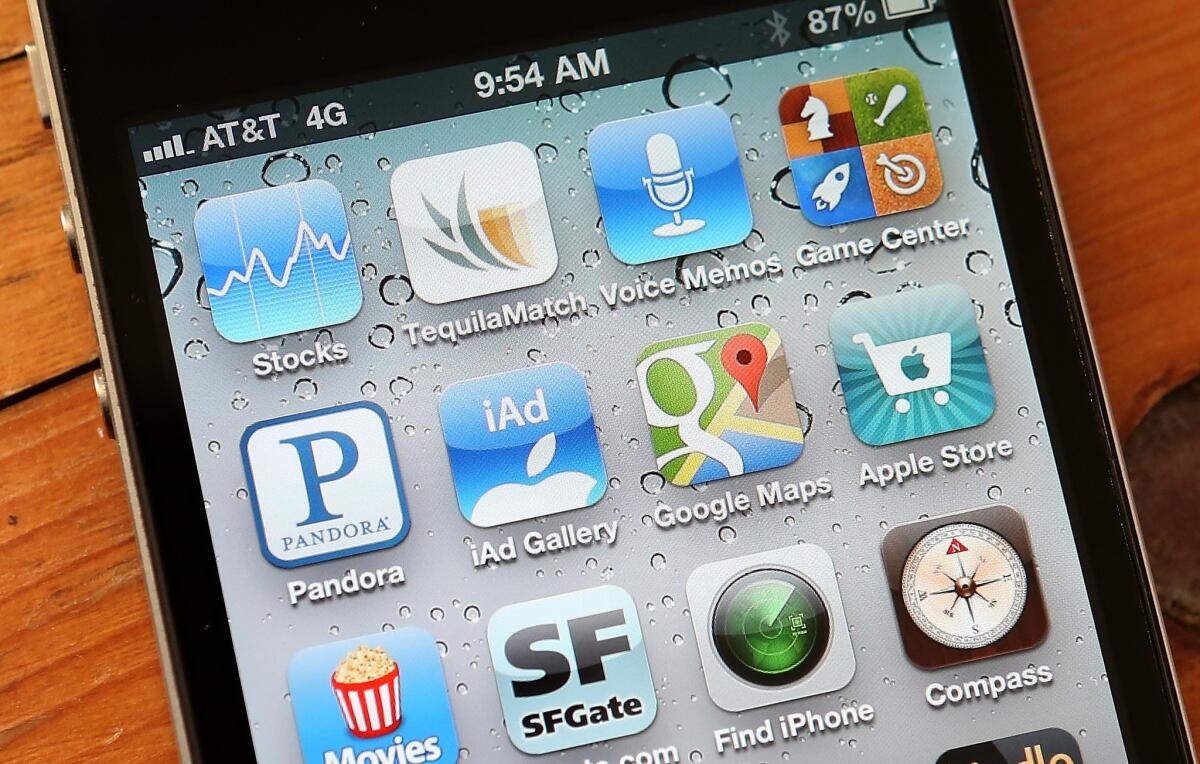Overseas smartphone fees can be a horror story

- Share via
You know the zombies that pop back to life even after you stab them with a pitchfork? It’s the same with smartphones.
That’s the bitter lesson I learned after returning home from Greenland and getting a $1,106 bill from Sprint for international data roaming, even though data roaming on my iPhone 4S was turned off.
How could this zombie data usage happen? And how can I find out if it’s happening?
Smartphones are the undead of phones. They keep looking for a way to connect to data, even when you don’t want them to. Even when you think data service is turned off.
The formula is: smartphone + international travel = watch out.
I had a BlackBerry before my iPhone and never had a single data charge when traveling internationally.
But data-rich smartphones are different. Data roaming may be turned off, leaving only voice roaming active so you can call home. But if the phone keeps trying to connect to data, it may succeed. Possible scenarios:
• A smartphone’s location services, push notifications or apps switch the data roaming back on while the customer is clueless.
• A foreign cell carrier keeps “asking” your phone to accept data, and your flattered phone responds although you don’t know it.
• You decide to use free Wi-Fi for a minute, not realizing that, on some phones, if the Wi-Fi signal is even briefly interrupted your phone will connect to the Web by way of the costly foreign 3G network.
• Phones turned off may reinstate obscure underlying data-roaming features when switched back on.
After throwing myself on Sprint’s mercy, I got a 75% break on the roaming charge.
I thought that was a good result until I found out that, according to a 2010 agreement with the Federal Communications Commission, America’s wireless carriers are required to combat cellphone “bill shock” by notifying customers by voice or text as soon as international roaming, text or data charges begin to mount — not after the damage has already been done.
The deadline for full implementation of these rules was April 17, but international roaming warnings were in effect before that. All carriers must comply; for example, here is Sprint’s policy: “Sprint sends notifications in approximately $50 increments of international data roaming charges. Casual international roaming users will be required to opt-in when usage charges meet or exceed approximately $100 and (again at) $300.
“All customers incurring approximately $500 of international data usage charges will be suspended. * Sprint will continue to send notifications at approximately $50 increments over $500.” (For info, https://www.lat.ms/17Mx4PQ.)
The only notification I received was four days after I had left Greenland and was home. Even then, it warned only that my phone had incurred “at least $103” of data roaming charges.
When did I hear of the $1,106 tab? Two weeks later, when the bill came.
Unless you are a technical genius, there are only three options to reliably avoid international data roaming charges:
• Leave your phone at home. If you need one, buy a cheap international phone when you get to your destination.
• Use your smartphone in “airplane mode” only, and I mean only. That disables the phone, text and data but allows you to use the phone as a little computer to hook up to Wi-Fi. Before leaving home, download Skype or Google Voice apps to enable you to call or text through Wi-Fi on your phone. The downside is that you can’t use your phone to make a call unless Wi-Fi is available.
• Call your wireless provider before taking a trip, even to Canada. Ask them to explain policies and disable international data roaming. Manually turn off the cellular network, location services, push notifications, fetch-data feature and email on your phone.
Still, be careful. Monitor your usage.
You never know when that sleeping zombie’s eyes will fly open, spin like pinwheels and wake the data.
More to Read
Sign up for The Wild
We’ll help you find the best places to hike, bike and run, as well as the perfect silent spots for meditation and yoga.
You may occasionally receive promotional content from the Los Angeles Times.





